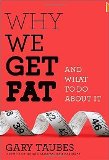March 16th, 2011 by RyanDuBosar in Better Health Network, Research
No Comments »

Obesity contributes to cardiovascular risk no matter where a person carries the weight, concluded researchers after looking at outcomes for nearly a quarter-million people worldwide.
Body mass index, (BMI) waist circumference, and waist-to-hip ratio do not predict cardiovascular disease risk any better when physicians recorded systolic blood pressure, history of diabetes and cholesterol levels, researchers reported in The Lancet.
The research group used individual records from 58 prospective studies with at least one year of follow up. In each study, participants were not selected on the basis of having previous vascular disease. Each study provided baseline for weight, height, and waist and hip circumference. Cause-specific mortality or vascular morbidity were recorded according to well defined criteria.
Individual records included 221,934 people in 17 countries. In people with BMI of 20 kg/m2 or higher, hazard ratios for cardiovascular disease were 1.23 (95 percent CI, 1.17 to 1.29) with BMI, 1.27 (95 percent CI, 1.20 to 1.33) with waist circumference, and 1.25 (95 percent CI, 1.19 to 1.31) with waist-to-hip ratio, after adjustment for age, sex, and smoking status. After adjusting for baseline systolic blood pressure, history of diabetes, and total and HDL cholesterol, corresponding hazard rations were 1.07 (95 percent CI, 1.03 to 1.11) with BMI, 1.10 (95 percent CI, 1.05 to 1.14) with waist circumference, and 1.12 (95 percent CI, 1.08 to 1.15) with waist-to-hip ratio.
BMI, waist circumference, or waist-to-hip ratio did not importantly improve risk discrimination or predicted 10-year risk, and the findings remained the same when adiposity — the carrying of adipose tissue (fat) — measures were considered. Read more »
*This blog post was originally published at ACP Internist*
February 6th, 2011 by RyanDuBosar in Better Health Network, Research
No Comments »

 Sports fans may literally live and die on their team’s victories, according to researchers who examined cardiac mortality rates after the home team won and lost the Super Bowl.
Sports fans may literally live and die on their team’s victories, according to researchers who examined cardiac mortality rates after the home team won and lost the Super Bowl.
Total and cardiac mortality rates in Los Angeles County increased after the football team’s 1980 Super Bowl loss but overall mortality fell after the 1984 the team’s Super Bowl win, researchers concluded from a review of death certificates reported in Clinical Cardiology.
First, authors gave a clinical review. Stress causes a cardiac cascade. The sympathetic nervous system increases and releases catecholamines. This triggers a rise in heart rate and blood pressure, and ventricular contractility increases oxygen demand, causing blood the sheer against and fracture atherosclerotic plaque, the authors explained. Stimulation of alpha receptors in the vasculature further constrict coronary vessels, increasing oxygen demand while limiting oxygen supply to the heart.
Next, they gave a sporting review. Los Angeles has played twice in the Super Bowl, the first time losing to the Pittsburgh Steelers (who play in this Sunday’s Super Bowl, incidentally) in 1980. The Los Angeles Rams, as they were known then, were a long-time hometown team and played the game in nearby Pasadena, Calif. “This game was high intensity,” wrote the authors, “with seven lead changes before Los Angeles lost a fourth-quarter lead and the game.”
Later, a new football franchise arrived in town, the Los Angeles Raiders. In 1984 the Los Angeles Raiders traveled to Tampa, Fla. to beat the Washington Redskins in a more mundane affair.
Now, the review of findings. Researchers combed death certificates based on age, race and sex to compare mortality rates for Super Bowl-related days with non-Super Bowl days and created regression models predicting daily death rates per 100,000. Read more »
*This blog post was originally published at ACP Internist*
February 2nd, 2011 by PJSkerrett in Book Reviews, Health Tips
No Comments »

 There isn’t much new in the latest iteration of the “Dietary Guidelines for Americans.” Three years in the making, the 2010 guidelines (released a tad late, on January 31, 2011) offer the usual advice about eating less of the bad stuff (salt; saturated fat, trans fats, and cholesterol; and refined grains) and more of the good stuff (fruits and vegetables; whole grains; seafood, beans, and other lean protein; and unsaturated fats). I’ve listed the 23 main recommendations below. You can also find them on the “Dietary Guidelines” website.
There isn’t much new in the latest iteration of the “Dietary Guidelines for Americans.” Three years in the making, the 2010 guidelines (released a tad late, on January 31, 2011) offer the usual advice about eating less of the bad stuff (salt; saturated fat, trans fats, and cholesterol; and refined grains) and more of the good stuff (fruits and vegetables; whole grains; seafood, beans, and other lean protein; and unsaturated fats). I’ve listed the 23 main recommendations below. You can also find them on the “Dietary Guidelines” website.
The guidelines do break some new ground. They state loudly and clearly that overweight and obesity are a leading nutrition problem in the United States, and that a healthy diet can help people achieve a healthy weight. They also ratchet down sodium intake to 1,500 milligrams per day (about two-thirds of a teaspoon of salt) for African Americans and people with high blood pressure or risk factors for it, such as kidney disease or diabetes. But the guidelines also leave the recommendation for sodium at 2,300 milligrams a day for everyone else, a move that the American Heart Association and others call “a step backward.”
Vague language spoils the message
One big problem with the guidelines is that they continue to use the same nebulous language that has made previous versions poor road maps for the average person wanting to adopt a healthier diet.
Here’s an example: The new guidelines urge Americans to eat less “solid fat.” What, exactly, does that mean — stop spooning up lard or Crisco? No. Solid fat is a catchphrase for red meat, butter, cheese, ice cream, and other full-fat dairy foods. But the guidelines can’t say that, since they are partly created by the U.S. Department of Agriculture USDA), the agency charged with promoting the products of American farmers and ranchers, which includes red meat and dairy products. “Added sugars” is another circumlocution, a stand-in for sugar-sweetened sodas, many breakfast cereals, and other foods that provide huge doses of sugar and few, or no, nutrients. Read more »
*This blog post was originally published at Harvard Health Blog*
February 2nd, 2011 by Harriet Hall, M.D. in Book Reviews, Opinion
1 Comment »

 Journalist Gary Taubes created a stir in 2007 with his impressive but daunting 640-page tome Good Calories, Bad Calories. Now he has written a shorter, more accessible book Why We Get Fat: And What to Do About It to take his message to a wider audience. His basic thesis is that:
Journalist Gary Taubes created a stir in 2007 with his impressive but daunting 640-page tome Good Calories, Bad Calories. Now he has written a shorter, more accessible book Why We Get Fat: And What to Do About It to take his message to a wider audience. His basic thesis is that:
– The calories-in/calories-out model is wrong.
– Carbohydrates are the cause of obesity and are also important causes of heart disease, type 2 diabetes, cancer, Alzheimer’s, and most of the so-called diseases of civilization.
– A low-fat diet is not healthy.
– A low-carb diet is essential both for weight loss and for health.
– Dieters can satisfy their hunger pangs and eat as much as they want and still lose weight as long as they restrict carbohydrates.
He supports his thesis with data from the scientific literature and with persuasive theoretical arguments about insulin, blood sugar levels, glycemic index, insulin resistance, fat storage, inflammation, the metabolic syndrome, and other details of metabolism. Many readers will come away convinced that all we need to do to eliminate obesity, heart disease and many other diseases is to get people to limit carbohydrates in their diet. I’m not convinced, because I can see some flaws in his reasoning. Read more »
*This blog post was originally published at Science-Based Medicine*
January 30th, 2011 by RyanDuBosar in Opinion, Research
No Comments »

 British researchers are trying to causally link raising the thermostat to obesity prevalence.
British researchers are trying to causally link raising the thermostat to obesity prevalence.
“Domestic winter indoor temperatures” appear to be rising, the researchers wrote, as is obesity. They focused on a causal link, focusing on acute and long-term effects of being comfortable in the winter.
They write: “Reduced exposure to seasonal cold may have a dual effect on energy expenditure, both minimizing the need for physiological thermogenesis and reducing thermogenic capacity. Experimental studies show a graded association between acute mild cold and human energy expenditure over the range of temperatures relevant to indoor heating trends.”
They also look at brown adipose tissue (BAT), aka “brown fat,” the type of fat that actually consumes energy instead of stores it. We all have this fat as infants, to help us regulate our body temperatures until our bodies learn to do it on their own. The researchers suggest that “increased time spent in conditions of thermal comfort can lead to a loss of BAT and reduced thermogenic capacity.”
Determining a link “may raise possibilities for novel public health strategies to address obesity,” although I shiver to think what those strategies might entail.
*This blog post was originally published at ACP Internist*



















